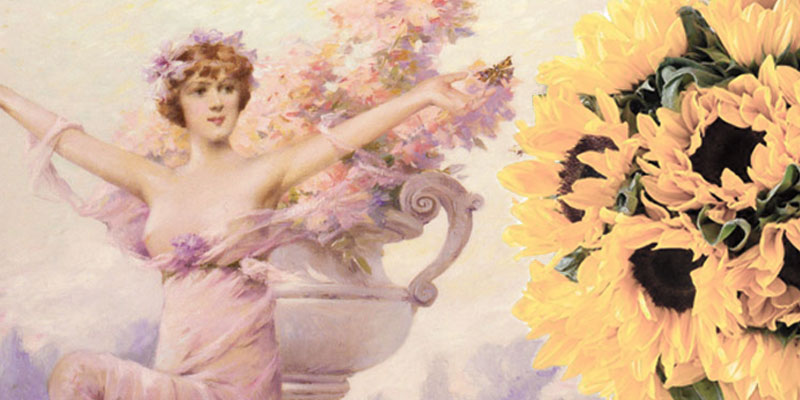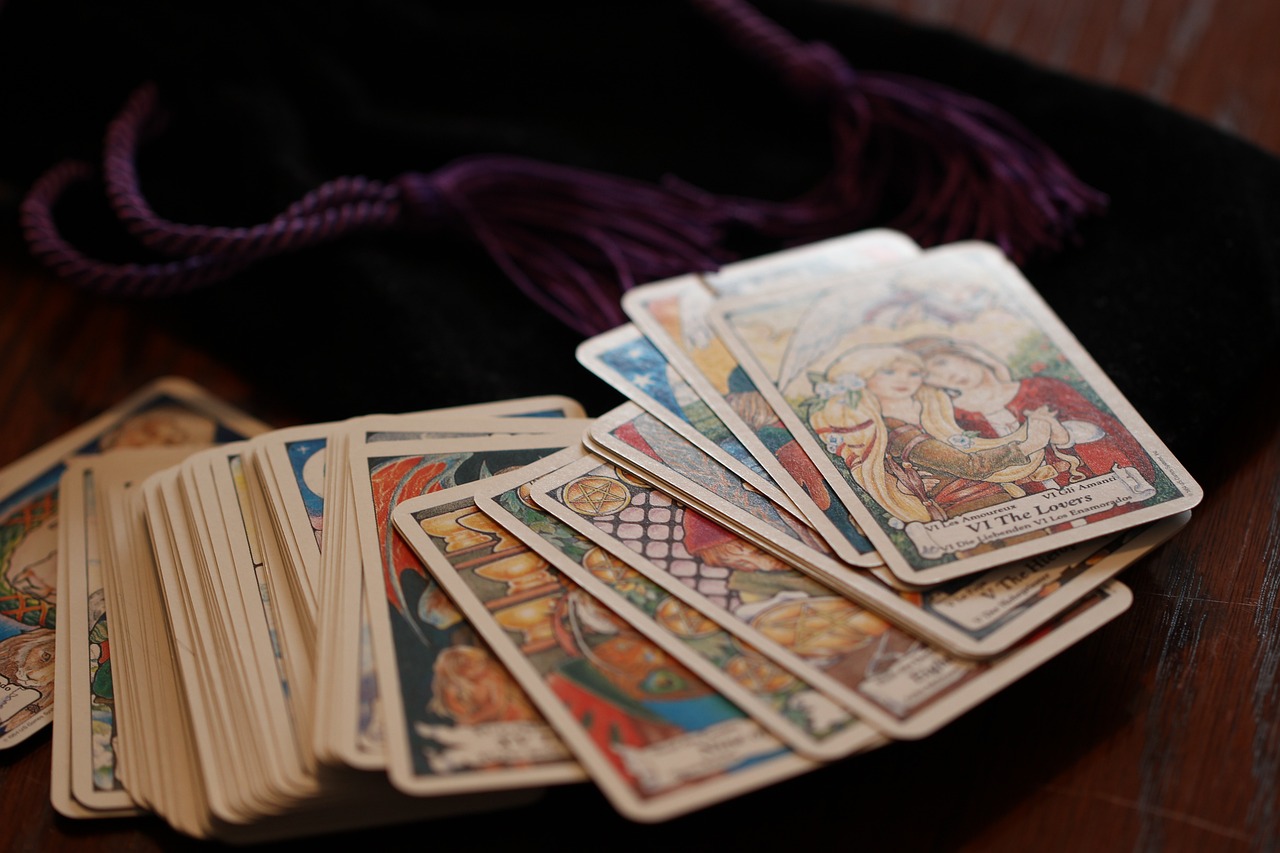Table of Contents
Throughout history, flowers have held a special place in the human imagination. These fragile yet vibrant symbols of nature have been woven into the tapestry of cultures around the world, giving rise to a rich tapestry of myths, legends and traditions. In this article, we’ll embark on a journey through the captivating world of floral folklore, exploring the stories and beliefs that have made flowers more than just botanical wonders but also carriers of deep cultural significance.
Throughout history, flowers have held a special and enduring place in the human imagination. These fragile yet vibrant symbols of nature have been woven into the tapestry of cultures around the world, giving rise to a rich tapestry of myths, legends and traditions. In this article, we’ll embark on a captivating journey through the world of floral folklore, exploring the stories and beliefs that have made flowers more than just botanical wonders but also carriers of deep cultural significance.
Floral folklore is a testament to the profound and timeless connection between humanity and the natural world. One of the most universal symbols found in various cultures is the association between flowers and love. The red rose, with its velvety petals, has long been a symbol of passionate love and desire. In Greek mythology, it is linked to the goddess of love, Aphrodite and her Roman counterpart, Venus. The story of the red rose’s origin, said to be born from the blood of Adonis, underscores its connection to themes of love and sacrifice.
In contrast, the white lily is often associated with purity and innocence. It has been linked to the Virgin Mary in Christian traditions, symbolizing her virtuous nature. Similarly, in Eastern cultures, the lotus flower holds deep spiritual significance, representing purity and enlightenment as it rises above the muddy waters, untouched by impurities.
Beyond themes of love and purity, flowers have been associated with a wide array of human emotions and attributes. The violet, for instance, symbolizes humility and modesty, while the sunflower represents adoration and loyalty. In Japanese culture, the cherry blossom embodies the transient nature of life and has become a symbol of the fleeting beauty of youth.
Floral folklore also extends to the language of flowers, known as “floriography.” During the Victorian era, flowers were used to convey complex emotions and messages, allowing individuals to express sentiments that were otherwise difficult to articulate. Each flower had a specific meaning and the arrangement of blooms could send subtle messages of love, friendship or even rejection.
In various traditions, flowers have been seen as protective charms and sources of good luck. The practice of hanging dried flowers, such as lavender or chamomile, in homes or above doorways was believed to ward off evil spirits and ensure the well-being of residents. Additionally, certain flowers, like the four-leaf clover, have been cherished for their association with luck and fortune.
Floral folklore isn’t limited to individual flower species; it extends to the broader significance of flowers in cultural celebrations and rituals. Festivals like Japan’s Cherry Blossom Festival (Hanami), India’s Holi and Mexico’s Day of the Dead all feature the prominent use of flowers in various customs and ceremonies, symbolizing themes of renewal, remembrance and the cyclical nature of life.
In conclusion, floral folklore is a testament to the enduring relationship between humans and the natural world. Flowers, with their diverse beauty and symbolic meanings, have transcended their botanical origins to become powerful carriers of cultural significance, conveying a wide range of emotions, beliefs and traditions. Exploring the world of floral folklore offers a deeper appreciation of the intricate web of human history, culture and the timeless beauty of the natural world.
Additionally, you can find further information on this topic by visiting this page: Flowers in Mythology | Encyclopedia.com
Flowers in Mythology
The Lotus Flower of Enlightenment (Asia)In many Asian cultures, the lotus flower is a symbol of purity, enlightenment and rebirth. Its roots in muddy waters, its stem through murky depths and its radiant blossom above the surface represent the journey of the soul from the darkness of ignorance to the light of wisdom.
The Tale of Persephone and the Pomegranate Seeds (Greece)In Greek mythology, the beautiful Persephone was abducted by Hades, the god of the underworld. While in captivity, she ate six pomegranate seeds. This act bound her to the underworld for six months each year, resulting in the changing seasons. The return of Persephone in spring marked the blooming of flowers and the awakening of life.
The Legend of the Red Poppy (Western Europe)The red poppy, often associated with remembrance and honoring fallen soldiers, has its roots in European folklore. According to one legend, red poppies grew in the fields where soldiers perished during World War I and their bright blooms were seen as a symbol of the bloodshed and sacrifice of war.
For additional details, consider exploring the related content available here Ten Flowers in Mythology and Their Meaning | Bouqs Blog

Flowers in Traditions
The Hanami Festival (Japan)Japan’s Hanami Festival is a cherished tradition that celebrates the beauty of cherry blossoms. Families and friends gather beneath blooming cherry trees to enjoy picnics and admire the ephemeral beauty of the flowers. Hanami represents a profound connection between people and nature.
The Language of Flowers (Victorian Era, Europe)During the Victorian era, flowers were used as a form of non-verbal communication. Known as “floriography,” this practice involved sending secret messages through carefully chosen bouquets. Each flower had its own meaning, allowing individuals to convey sentiments discreetly.
The Garland of Roses (Kentucky Derby, USA)The Kentucky Derby, one of the most prestigious horse racing events in the world, is celebrated with the presentation of a garland of red roses to the winning horse. This tradition dates back to 1883 when the rose became the official flower of the race, symbolizing both excellence and beauty.
Looking for more insights? You’ll find them right here in our extended coverage: National symbols of Wales | Wales.com

Flowers in Superstitions
Warding Off Evil with Garlic and Marigolds (Various Cultures)In many cultures, marigolds have been considered protective flowers, believed to ward off evil spirits. In some regions, they were planted alongside garlic for added protection, particularly during festivals and celebrations.
The Legend of the White Chrysanthemum (Asia)White chrysanthemums, associated with death and mourning in Asian cultures, are often used for funerals and memorial services. Avoiding them as gifts during joyous occasions is considered a superstition to prevent bad luck.
Guarding Against Malevolent Forces with Marigolds and Garlic:
Across various cultures, marigolds and garlic have stood as formidable symbols of protection against malevolent forces. The intertwining of these two potent elements in traditional practices serves as a testament to humanity’s enduring belief in the power of nature to safeguard against evil.
1. Marigolds: A Ray of Sunshine against Darkness:
- Guardians of the Garden: Marigolds, with their vibrant and sunny blooms, have long been embraced as guardians of gardens and homes in many cultures. Their vibrant colors symbolize the radiance of the sun, which is often associated with purity and positivity.
- Warding off Evil Spirits: Marigolds have a special place in festivals and celebrations as protective flowers. They are believed to possess the ability to ward off evil spirits and negative energy, making them a cherished addition to festive decorations.
- Companions to Garlic: In some regions, marigolds found a harmonious partnership with garlic, forming a formidable duo against malevolent forces. When planted alongside garlic, marigolds not only added a burst of color but also enhanced the protective aura of the garden.
2. The Legend of the White Chrysanthemum in Asian Cultures:
- Elegance in Mourning: In Asian cultures, the chrysanthemum carries complex symbolism, often associated with death and mourning. White chrysanthemums, in particular, are employed as symbols of mourning and are frequently used in funerals and memorial services.
- Respect for Tradition: There exists a deep respect for the traditions surrounding the chrysanthemum. During times of mourning, offering white chrysanthemums as a gesture of sympathy and respect is a common practice.
- Avoiding Joyous Occasions: A widely observed superstition advises against gifting white chrysanthemums during joyous occasions. This stems from the belief that the association with death and mourning could bring bad luck to celebratory events.
These diverse cultural practices reflect the profound significance of flowers in our lives. Marigolds and garlic stand as protectors, invoking the power of nature to shield against negativity, while the white chrysanthemum in Asian cultures embodies both the beauty of life and the solemnity of death. These traditions demonstrate how deeply intertwined our beliefs and customs are with the natural world and how flowers continue to serve as powerful conduits for expressing our deepest emotions and warding off malevolent forces, even in our modern age.
Looking for more insights? You’ll find them right here in our extended coverage: Flowers in Mythology | Encyclopedia.com

Floral folklore is a testament to the enduring power of flowers to captivate our hearts and minds. These stories, traditions and superstitions are a testament to the profound impact that flowers have had on our cultures throughout history. They remind us that flowers are not just beautiful adornments in our lives but also carriers of symbolism, meaning and a connection to our deepest beliefs and emotions. The next time you encounter a flower, take a moment to consider the rich tapestry of folklore that has made it more than just a botanical wonder but a cherished part of our human heritage.
Floral folklore is a testament to the enduring power of flowers to captivate our hearts and minds. These stories, traditions and superstitions are a testament to the profound impact that flowers have had on our cultures throughout history. They remind us that flowers are not just beautiful adornments in our lives but also carriers of symbolism, meaning and a connection to our deepest beliefs and emotions. The next time you encounter a flower, take a moment to consider the rich tapestry of folklore that has made it more than just a botanical wonder but a cherished part of our human heritage.
Cultural Significance: Floral folklore often reflects the unique cultural values and beliefs of different societies. For instance, in Japanese culture, cherry blossoms (sakura) symbolize the transient nature of life and the beauty of impermanence. In contrast, the rose has been a symbol of love and passion in Western cultures for centuries. Understanding these cultural nuances adds depth to our appreciation of flowers.
Language of Flowers: The Victorian era saw the popularization of the “language of flowers” or floriography, where different flowers carried specific meanings. Gifting flowers was not just a gesture of affection but also a way to convey hidden messages. A bouquet carefully composed with specific blooms could communicate feelings of love, friendship or even an apology.
Healing and Medicinal Folklore: Many flowers have played essential roles in traditional medicine and healing practices. Folk remedies and herbal medicine often featured floral ingredients, harnessing the therapeutic properties of plants. The wisdom of these age-old practices reminds us of the holistic benefits that flowers can offer beyond their visual appeal.
Superstitions and Rituals: Flowers have also been intertwined with superstitions and rituals. From warding off evil spirits to ensuring a bountiful harvest, flowers have been central to numerous customs and ceremonies. For example, the belief in the protective powers of garlic and onions, both members of the Allium family, stems from folklore that associates them with repelling vampires and disease.
Connection to Emotions: Flowers have an innate ability to evoke emotions. Whether it’s the joyousness of sunflowers or the solemnity of lilies at funerals, their presence can amplify our emotional experiences. Understanding the emotions associated with specific flowers can guide us in selecting the perfect blooms for various occasions.
Inspiration for Art and Literature: Floral folklore has been a wellspring of inspiration for artists, writers and poets throughout history. Flowers often feature prominently in paintings, poems and literature, serving as metaphors for love, beauty and the passage of time. The famous Dutch still-life paintings of the 17th century are a testament to the enduring allure of floral subjects in art.
In closing, the world of floral folklore is a captivating journey through time, culture and human emotion. It sheds light on the intricate ways in which flowers have woven themselves into the fabric of our lives. They are not just botanical wonders; they are carriers of stories, symbols and sentiments that connect us to our past and enrich our present. So, the next time you encounter a flower, pause to appreciate the centuries of wisdom and tradition that it carries with it, reminding us of the enduring and universal appeal of these natural wonders.
You can also read more about this here: The Influence of Aztec Mythology on Mexican Culture and History
More links
If you’d like to dive deeper into this subject, there’s more to discover on this page: National symbols of Wales | Wales.com
